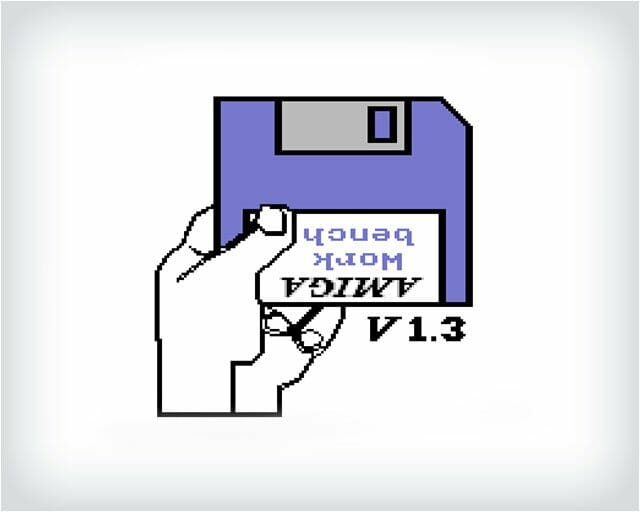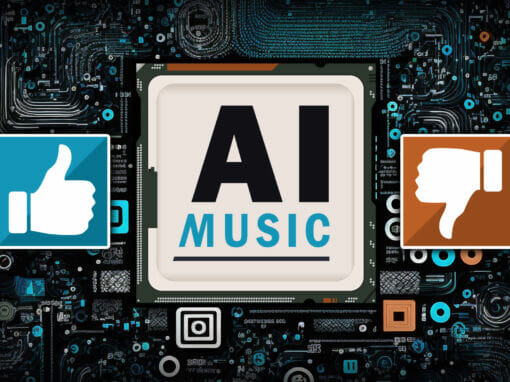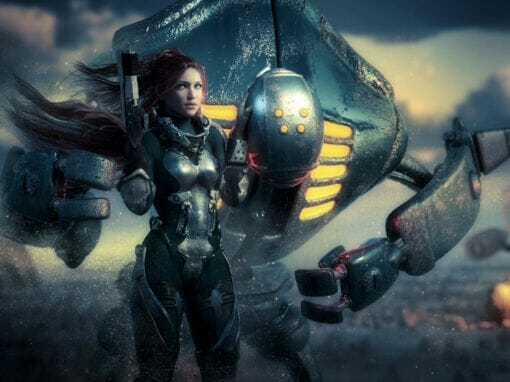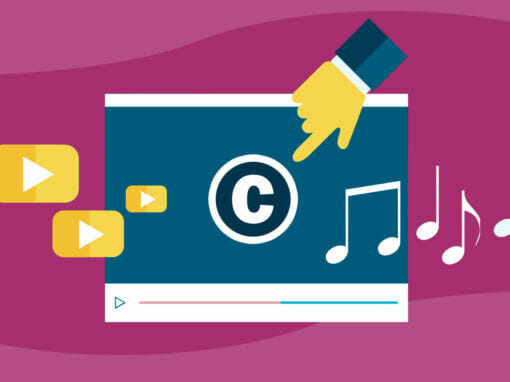 It was written in 1991. I was sixteen. I couldn’t play any instruments and I’d had no music lessons of any type. I used an Amiga with just 512k of RAM, running four channel sequencing software called OctaMED (when combined with a midi device a further four channels became available). At the time I didn’t have the hardware to connect a midi device, nor for that matter, did I even have a midi device. So I had 512k to load the operating system and OctaMED, then with what remained of the RAM, I could load samples to compose with (if the floppy drive could arse itself to work).
It was written in 1991. I was sixteen. I couldn’t play any instruments and I’d had no music lessons of any type. I used an Amiga with just 512k of RAM, running four channel sequencing software called OctaMED (when combined with a midi device a further four channels became available). At the time I didn’t have the hardware to connect a midi device, nor for that matter, did I even have a midi device. So I had 512k to load the operating system and OctaMED, then with what remained of the RAM, I could load samples to compose with (if the floppy drive could arse itself to work).
If you were a gamer at this time you’ll remember that sounds on many computers just tended to be beeps. Pick something up “beep”, score a goal “beep”, destroy a tank with a depleted uranium shell “beep”. On the Amiga music had improved a little, but it was still very basic – stereo meant that one instrument was 100% in the left channel, and a second instrument was 100% in the right channel. To save file space and RAM a lot of music was purely midi based. It didn’t sound good. It was tinnier than a can of beans, minus the beans.
 When it came to experimenting with music on the Amiga – a temperamental underpowered wedge of beige – I first played around with compositions written by other people. I’d rearrange blocks of sequences, turn channels on and off, amended drum beats (mainly trying to make them funkier or more powerful), or tweak the notation of riffs and melodies to make them more catchy.
When it came to experimenting with music on the Amiga – a temperamental underpowered wedge of beige – I first played around with compositions written by other people. I’d rearrange blocks of sequences, turn channels on and off, amended drum beats (mainly trying to make them funkier or more powerful), or tweak the notation of riffs and melodies to make them more catchy.
However, it wasn’t long before I chose to delete an existing song and create something of my own using the original samples. Then I began to pool samples (so hard to get in those days) by exporting them from the various songs I had come across.
I then started to compose sequences entirely from scratch, carefully picking each individual sample to help build the specific sound that I wanted to achieve. The bass drum, snare and hi-hat had to be just so. The bass should be deep and rich. Electric guitars needed to be powerful.
Unfortunately, the very nature of sequencing music with less than 512k of samples means that the sample quality is atrocious. It also meant that I could never load all of the samples that I wanted to use. Every song was compromised – I could have the nicely distorted guitar sample, or the really cool synth keyboard sample. I could have busy full on drums, but little in the way of instruments, and vice versa.
Despite the ridiculously small amount of working memory, having only four channels to work with, and using samples that were so low on quality they could easily be mistaken for static interference, I loved “writing music” on my Amiga (which I still have and occasionally play on today).
So, the oldest song ever written?
The first proper track that I wrote was called Magic 12; technically the oldest song written by me. It used a synthetic guitar sample that came to be a favourite – low notes sounded a little grungy and had menace and punch, but high notes still had an element of power and some clarity. At the beginning of the song there’s a short dark build up featuring some yelling, then bang, the drums and guitar burst in with the full power of 512k’s worth of four channel sound. That’s it. Just drums and guitar – that’s all you get with such limited hardware.
Magic 12
Determination, despite doubt
Early reviews were bad. They included “it sounds like music being dragged through barbed wire” and “can you hear builders working?”. As the quality of music that I wrote gradually improved, negative reviews began to turn into backhanded compliments: “I can’t believe that you wrote this!”. With the exception of a few close friends who regularly asked to hear what I had been writing there wasn’t much in the way of support. However, whenever I wrote music I believed that one day I would be able to create the type of sound that had only ever existed in my head.
Years later, more experienced, and with the rampant march of technology, I was finally able to write the album that I had always dreamed of creating; Bring it like fire. It’s a dark, brooding, powerful album that contains many different genres of music. Some songs are slow, others fast, a few gradually build, others quickly hit hard, a couple simply grind. All the tracks however are dark, intense and tend to feature pounding drums, grungy guitars, distorted synths, and many have orchestral backing – everything I had only been able to imagine in my mind when I first wrote Magic 12.
If you listen to the oldest song ever written by me you’ll hear terrible quality samples in a song limited by a chronic shortage of computer memory and absurdly basic software. But, if you’re like me, you’ll hear much more. You’ll hear guitars, keyboards and strings, but most importantly, you’ll hear the seed of power and intensity that eventually grew into Bring it like fire.
- AI music; the pros and cons explained, by AI! - March 22, 2023
- Video game music for developers – low cost licensing - February 14, 2023
- How to get the rights to a song; a must read - October 14, 2022









